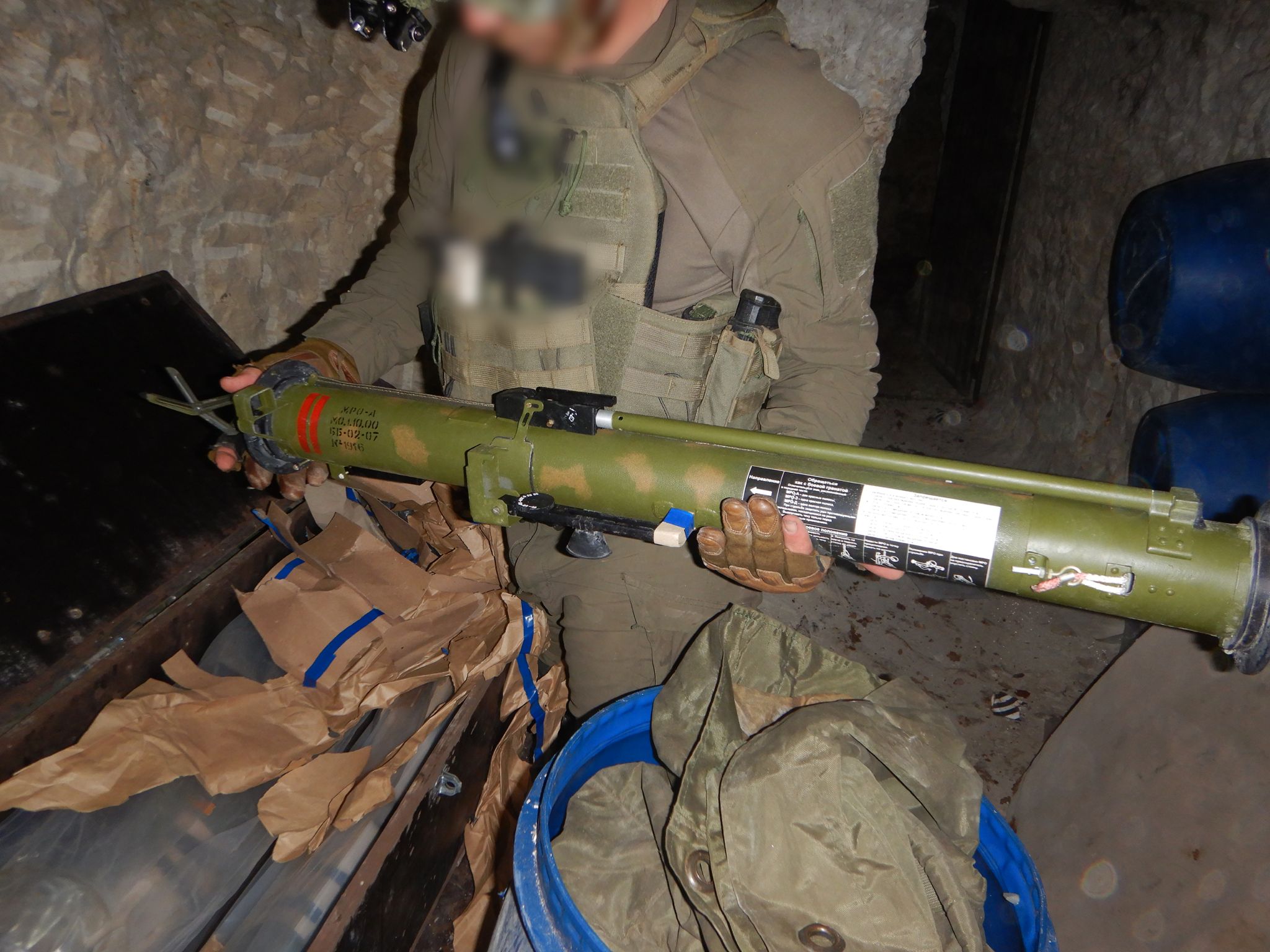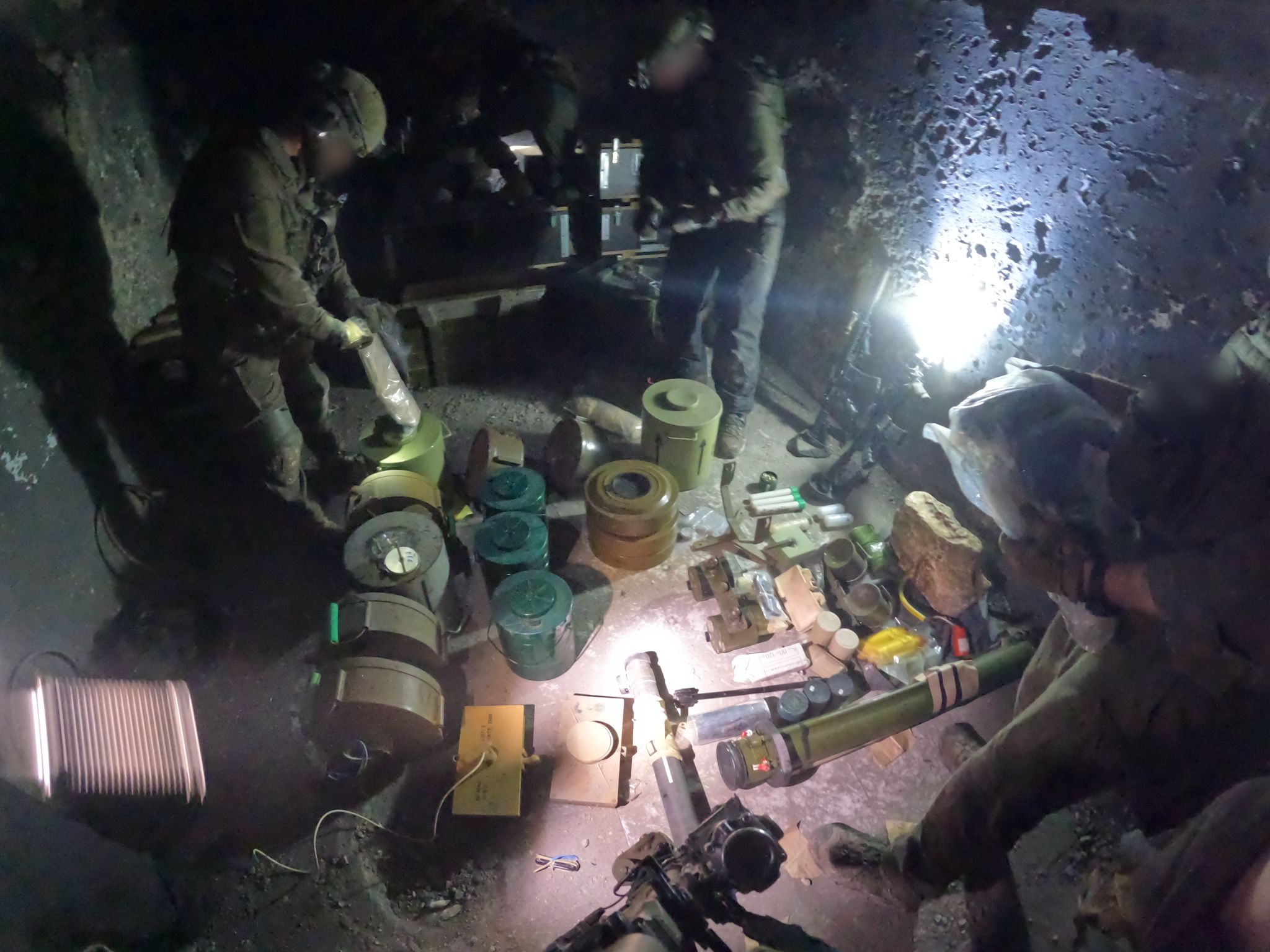IDF destroys dozens of tunnels, staging areas intended for Hezbollah's plan to 'conquer the Galilee'
Previous small-scale raids prepared ground for larger incursion that began Monday

After U.S. media recently reported that Israeli forces had begun conducting operations within Lebanese territory, the IDF on Tuesday not only confirmed the operations were happening but also stated they had been taking place since the start of the war.
IDF Spokesman Brig.-Gen. Daniel Hagari revealed that the Israeli military has conducted dozens of raids to destroy some 700 Hezbollah targets located close to the Lebanese border, which had been prepared to facilitate a massive invasion into the Israeli Galilee in the case of a war.
Several days after Hamas invaded Israel last Oct. 7, former Hezbollah leader Hassan Nasrallah was still deliberating whether to order his elite Radwan Forces to carry out its plan to capture large parts of northern Israel, for which it had trained and prepared for many years.
According to Army Radio, 2,400 Radwan fighters and another 500 Palestinian Islamic Jihad (PIJ) terrorists trained by Hezbollah were stationed at the Israeli border, awaiting the order to invade.
Since Nasrallah opted against an invasion, the Israeli Army and Air Force have made pushing the Radwan Force away from the border a primary objective.
The IDF's revelations highlight the extent of the Radwan Force's preparations, which included extensive networks of infrastructure, both above and below ground, designed to facilitate a rapid, large-scale invasion.
“They had everything there: thousands of guns, anti-tank missiles, explosives, mines, RPGs, anti-aircraft missiles, cameras, binoculars, night vision devices, vests, communication devices, maps and aerial photographs,” wrote Doron Kadosh, Army Radio’s military correspondent, after reviewing some of the weapons captured during the raids.
On Tuesday, IDF Spokesman Brig.-Gen. Daniel Hagari de-classified the details of three operations that take place in Lebanese territory, illustrating the scope of the preparations.
One raid targeted infrastructure in Mais al-Jabal, only a few hundred meters away from the Israeli city of Kiryat Shmona. At the edge of the village, soldiers found a house under which the terrorists dug a 150-meter-long (about 500 feet) tunnel.
This position was “used by the terrorists to store weapons and was planned to be the preparation area for Hezbollah terrorists before attempting to invade Israeli territory. During the operation, the troops conducted a targeted raid on the house and revealed large amounts of weapons stored on the ground floor,” Hagari stated.
“In the basement, our soldiers found an elevated platform, built to hide a shaft that led to an underground tunnel. The soldiers exposed a tunnel 150 meters long that did not cross into Israeli territory that was excavated in stone. At the end of the activity we dismantled the tunnel and the house in joint ground and aerial strikes.”
Another example is the Lebanese village of Kafr Kila, just a few hundred meters away from the Israeli town of Metula. Acting on prior intelligence, IDF soldiers conducted a targeted raid on a house in the village, finding a tunnel shaft hidden under a bed in a children’s room.
“The soldiers went inside the tunnel shaft and revealed a 100-meter-long underground tunnel excavated in stone. The troops scanned the tunnel and found weapons stored in barrels. In one of the rooms, they exposed a weapons storage facility intended to be used by Hezbollah on the day of the planned invasion,” Hagari said in the statement.

Hagari's final example was regarding an operation targeting Hezbollah infrastructure near Nurit, located between the Israeli border and the Lebanese village of Aita al-Sha’ab.
“Using classified technological means, we identified a Hezbollah combat compound and underground staging area built near the village,” Hagari explained.

According to the IDF, the compound included a system of combat trenches, both above and below the ground, connecting to an underground tunnel containing a weapons storage facility, a command and control center, and preparation and living spaces for Hezbollah terrorists.
“Our soldiers raided the combat trenches at the top of the mountain. They scanned them and found an access point to a tunnel route that goes down below the ground, in the direction of the Lebanese village. The soldiers went deep inside the tunnel, where they found large numbers of weapons stored in the living compounds,” Hagari said.
“The operations that we de-classified tonight are only a small number of dozens of operations that we will reveal going forward, including the destruction of Hezbollah’s strategic assets and capabilities.”

The All Israel News Staff is a team of journalists in Israel.













